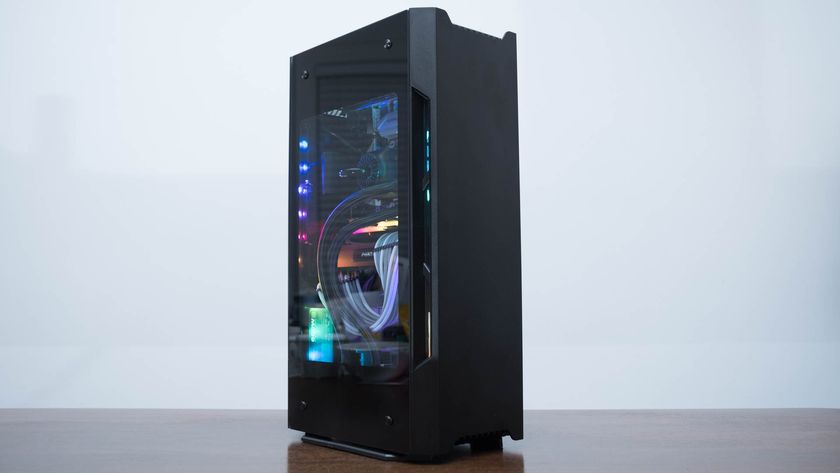TechRadar Verdict
A high-value, well-made player that delivers warm, full sound with a fine midband
Pros
- +
Tonally on the warm side
Full bass and well contrived midband
Cons
- -
A little soft around the edges, especially at the frequency extremes
Why you can trust TechRadar
While Denon has long been a major name in component high fidelity in the Far East, it has only recently re-established itself as a source of hi-fi components in Europe. It started at the high end a couple of years or so ago and is only now finishing its portfolio at the entry level, which includes the model tested here.
The DCD-500AE is junior to the DCD-700AE, but under the skin there are some obvious similarities, as they share key components: the general topology of the player, the mechanism and the DAC, for example.
The main difference is that the DCD-500AE is stripped down, with a more limited feature set - it lacks some of the funkier features like pitch control. The other major difference is that where the senior players are built in Japan, the 500AE is made in China, with a predictable impact on the selling price. The DCD-700AE sells for £250, where the DCD-500AE sells for an impressive £160. How low can you go?
The two players are built to much the same standard, however. In fact, the DCD-500AE is a surprisingly chunky player, with the mechanism and drawer mounted amidships, and with the same neatly rounded extruded alloy fascia.
The control system has a limited set of well-disposed control buttons, and highly legible labels, rather than the grey on grey scheme that has become so unaccountably popular in some quarters. The player really does look like a high-quality item, aided and abetted by an attractive fluorescent display and a well designed remote control, an impression reinforced by the smooth drawer action.
Although not extensive, the feature set does extend to an optical digital output (but no electrical counterpart), a headphone socket with volume control, a display dimmer, a 'Pure Direct' mode and a full set of track/program and random play options.
In short, this is an exceptional 'budget' player, easily a match for any other player currently known to us at the price. Perhaps the most obvious competition comes from the Cambridge Audio stable in the form of the Azur 340C at £150, which is sold exclusively through the Richer Sounds network.
The Denon player is an excellent all-purpose design that can be used with virtually any low cost components system. The bass is unusual for a low-cost player in being on the full, slightly warm side of absolute neutrality.
There's no lack of extension either, and the player starts and stops well so that, although it is no timing demon, it all happens with apparent ease and conviction. No, it doesn't have the raw power of more ambitious designs, but without a firm point of reference, it would be hard to pick holes.
The player's strongest point musically is the midband, which is unexpectedly smooth, fluid and open, with broad (perhaps too broad) tonality and stable stereo imagery. Almost certainly it is the bass that contributes to the warmth and also to the perceptibly rich, well varied tonality, but these are precisely the kind of qualities that will sit well in the kind of system the DCD-500AE was intended to complement.
The mid/treble region plays ball here, too. There is no hint of the thin imagery that seems to be a speciality of some lesser CD players - it all happens with unfailing decorum.
The story here is a simple one. The Denon is exceptionally well priced for a premium brand player, and exceptionally well turned out in the ways described above. It also delivers a thoroughly enjoyable listening experience, which should sit comfortably with virtually any lowish-cost components based system.
Tech.co.uk was the former name of TechRadar.com. Its staff were at the forefront of the digital publishing revolution, and spearheaded the move to bring consumer technology journalism to its natural home – online. Many of the current TechRadar staff started life a Tech.co.uk staff writer, covering everything from the emerging smartphone market to the evolving market of personal computers. Think of it as the building blocks of the TechRadar you love today.













